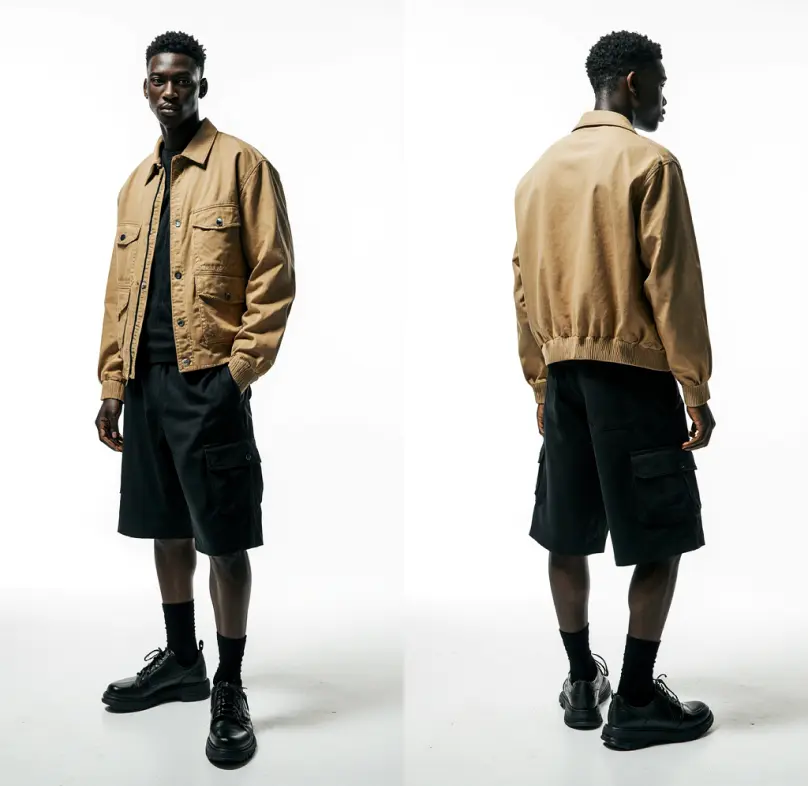

Feedback Loop

Set Up










Social media has become integral to daily life, transforming communication, entertainment, and commerce. These platforms redefine how we interact with the world and each other and influence societal norms and global trends.
For marketers, influencers, and businesses, understanding these dynamics is crucial to refine their strategies. For others, these insights satisfy curiosity. Here are the most intriguing social media facts of 2025.
In a world with a population of 8.215 billion, technology's influence is undeniable. Currently, approximately 91.17% (7.49 billion) of people have and use smartphones. This suggests that a significant majority of the global population now has access to online.
As of early 2025, social media platforms have reached 5.24 billion active users, which is approximately 63.9% of the global population. This represents a 4.1% rise in users from the previous year. While this count likely includes some duplicate and fake accounts, it is clear that social media continues to grow. On average, around 8.1 new users sign up every second. Projections suggest that by 2027, the number of social media users is expected to reach around 5.85 billion, indicating a continued expansion of the digital landscape.

Data from the first quarter of 2025 indicates continued growth, although the specific number of new users added since January 2025 isn't explicitly stated in the readily available reports. However, looking at the annual growth, approximately 206 million new users joined social media in the past year (from early 2024 to early 2025). This represents a 4.1% year-on-year increase.
In early 2025, the average user accesses about 6.83 social media platforms monthly. People primarily engage with social media for various reasons, with finding information being a major motivator. Staying in touch with friends remains a key use case.
Currently, global social media penetration stands at approximately 63.9%.

As of early 2025, the average daily time spent using social media worldwide among internet users is approximately 2 hours and 21 minutes, which is equivalent to 141 minutes. This shows a slight decrease from the 143 minutes reported for 2024 and a further decrease from the 151 minutes reported for the previous year (2023). This continuing trend suggests ongoing shifts in how people allocate their time online and across different media.

However, interest in social media remains robust, especially in specific markets. For example, Kenyans now spend an average of 3 hours and 55 minutes daily on social platforms. Similar trends are observed in South Africa, Brazil, Colombia, and Nigeria, although Filipinos have reduced their daily social media time by 4 minutes. (Daily Social Media Usage)

Facebook continues to lead as the most popular social network, with 3.07 billion monthly active users worldwide as of early 2025. It remains the first social network to have surpassed one billion registered accounts and continues to maintain its position with the largest user base. (Facebook users)

YouTube has approximately 2.5 billion monthly active users. Both WhatsApp and Instagram attract about 80% of YouTube's user base, each with around 2 billion monthly active users. Facebook has a larger audience than YouTube, with approximately 3.07 billion monthly active users, meaning YouTube's reach is about 81.4% of Facebook's. TikTok has around 1.58 billion monthly active users, which is lower than YouTube's user base. (Source 1, Source 2).

In 2024, YouTube dominates in total user time spent on apps, with users spending more than twice as much cumulative time on YouTube compared to TikTok. Facebook ranks second, but users spend less than 60% of the time they spend on YouTube.
Based on data from early 2025, the landscape of user time spent on social media platforms has evolved. While YouTube remains a leading platform for overall time spent, the dominance described for 2024 might have shifted. Recent data indicates that TikTok has seen a significant increase in user engagement and in some reports, users now spend a comparable amount of time, or even more, on TikTok compared to YouTube on a daily basis.
Facebook continues to be a major platform for time spent, but the exact percentage compared to YouTube would require specific recent reports focusing on cumulative app time. However, the trend suggests that the gap between YouTube and TikTok in terms of user time has likely narrowed, and in some regions or demographics, TikTok might even surpass YouTube (Top Social Platforms in 2025).

However, when it comes to average time per user, TikTok is the leader. Users spend over 4 hours more per month on TikTok than on YouTube.

In 2025, Instagram leads as the top social media platform, favoured by one-sixth of working-age internet users globally – more than twice as many as those who prefer TikTok. While Instagram remains strong among younger audiences, TikTok is steadily gaining popularity. TikTok continues its strong growth and popularity, especially among younger audiences, and in some regions, it could be challenging Instagram's dominance in terms of preference.
Regarding the TikTok ban in India, it remains in effect as of April 2025. This ban continues to have a significant impact on global preference trends, particularly in a large market like India.

Video content is at the forefront of social media strategies, with live streaming and video consumption on the rise. Each day, about 500 million Instagram users share Stories, 70% of which are watched with sound. Meanwhile, YouTube Shorts attract 70 billion daily views worldwide.
Authentic, user-generated content is gaining traction in 2025: 80% of consumers trust UGC over traditional ads. Reviews and everyday videos are trusted by 70% of consumers, who prefer peer recommendations over brand communications. On YouTube, user-generated videos receive 10 times more views than branded content.
Emojis are used by 92% of internet users to quickly convey emotion, context, and personality, leveraging the brain’s rapid image recognition in just 12 milliseconds. Each day in 2025, over 900 million emojis are sent on Facebook Messenger without accompanying text, and about half of all Instagram comments include emojis. Tweets that include emojis see a 25.4% increase in engagement, while posts on Facebook and Instagram experience significant boosts of 25.4% and 48%, respectively.
Adding emojis to push notifications can increase the click-through rate (CTR) by 5%, and messages featuring emojis have a up to 45% or even 56% (depending on the study) open rate. Notably, 44% of customers are more likely to make a purchase if emojis are used in advertisements.
Among the most popular emojis are the laughing face 😂, heart ❤️, and rolling on the floor laughing emoji 🤣. The "Grinning Face" emoji is especially versatile, conveying happiness, joy, friendliness, and light-heartedness, effectively enhancing positive interactions across social platforms.

Strategic timing is crucial for maximising reach and engagement on social media platforms. Typically, the best days for broad audience reach and interaction are Tuesdays, Wednesdays, and Thursdays at 9 a.m. or 2 p.m. Sundays, however, generally yield the lowest engagement rates across all platforms.
Each social media platform also has its optimal times for posting. TikTok, for example, sees peak activity between 3 p.m. and 9 p.m. Instagram, on the other hand, experiences high engagement on Wednesdays from 9 a.m. to 4 p.m. and Fridays at 11 a.m.
Social media is a powerful tool with both benefits and challenges. Understanding its dual nature reveals intriguing dynamics at play.
On the bright side, social media simplifies customer connections and helps reach a wide audience with just a click. This fosters a sense of community and facilitates real-time interactions. Yet, excessive digital reliance can diminish face-to-face interactions, impacting team morale and overall brand outcomes. Companies often balance this by organising physical meet-ups for staff and customers.
Social media ads are budget-friendly and allow precise demographic targeting. This affordability benefits companies with modest marketing budgets. However, lack of content control can lead to negative interactions like misinformation or unfavourable comments. Vigilant monitoring and prompt responses are crucial to safeguarding brand reputation.
Social media promotes robust user interaction, leads to stronger customer relationships and loyalty. Yet, it also opens channels for negative reviews and complaints that can harm a brand if not addressed swiftly and effectively. Managing negative feedback with prompt, respectful responses is vital for maintaining a positive online presence.
Businesses leverage social media for diverse content sharing across platforms, showcasing brand personality and engaging different audiences. However, employees' social media behaviour reflects on the company. Clear guidelines are essential to prevent potential harm, ensuring that employees' posts align positively with the brand's values and image.
Social media platforms offer connectivity, support, and sharing opportunities. However, they can also lead to addiction and contribute to adolescent depression. Comparisons on social media often result in decreased self-esteem among adolescents, yet many find solace and connection in these platforms during challenging times. Excessive use, especially over three hours daily, heightens the risk of mental health struggles. Mindful engagement and moderation are crucial to balancing the positive and negative impacts of social media on mental well-being.
Social media platforms each have their own unique strengths, user bases, and engagement patterns. Here, we explore some fascinating platform-specific statistics and trends for 2025.
Did you know that Facebook's largest audience isn't in its birthplace, the United States? India leads with over 378 million active users. To put that into perspective, Facebook India would rank third globally in population size, following China and India itself. The United States, Indonesia, and Brazil follow with 193.8 million, 119.05 million, and 112.55 million users, respectively.
Facebook boasts 3.07 billion monthly active users and 2.11 billion daily active users worldwide.
The largest demographic is 25-34, with significant engagement from older age groups as well. This demographic, often in key decision-making roles, amplifies Facebook's influence.
While 56.3% of Facebook users are male, female users account for a substantial 43.7%.
in 2025, despite 86% of marketers using Facebook to promote brands, only 44% of users actively engage with brands, highlighting a gap between reach and interaction.
As for ad audience reach, Libya leads with 131.1%, followed closely by the United Arab Emirates, Mongolia, the Philippines, and Qatar. However, the average click-through rate (CTR) for Facebook ads struggles to surpass 1%, especially with older demographics.
As of September 2023, popular fan pages on Facebook boast millions of followers, with sports teams commanding the highest engagement rates.

Did you know that Instagram's influence stretches far beyond its Silicon Valley origins? Bahrain boasts the highest audience reach at 95.6%, followed closely by Kazakhstan at 90.8%, with the United Arab Emirates, Turkey, and Brunei each engaging over 85% of their populations on the platform.
As of March 2025, India leads the pack with 413.85 million users, showcasing Instagram's dominance in one of the world's largest markets. Following closely are the US and Brazil. The US and Brazil remain highly active markets for Instagram, with the US having around 171.7 million and Brazil around 140.7 million users. Indonesia also has a substantial user base, with over 103.4 million users.Turkey's user count is around 58.45 million.
As of January 2025, with over 2.1 billion monthly active users, Instagram maintains a robust engagement rate. Surprisingly, Instagram's engagement rates are higher than Facebook’s (2.0% vs. 1.4%).
More than half of Instagram's users are aged 34 or younger, with the largest cohort being 18-24 years old.
Gender-wise, as of January 2024, Instagram was slightly more popular with men (50.6%) than women. However, nearly 50% of women regard Instagram as their preferred social media platform, indicating its deep-seated cultural impact and preference over rivals like TikTok, especially among younger demographics.
90% of users follow at least one brand, and 70% of shoppers turn to Instagram for product discovery.
70% of users are receptive to advertisements while watching videos.
Threads, Instagram’s version of X, gained 100 million users within a week of its launch. The app has seen significant growth, reaching over 320 million monthly active users by January 2025.
Ranked as the fourth most popular social network globally, Instagram trails only Facebook, YouTube, and WhatsApp in user base and engagement. As of January 2025, Instagram is the most downloaded social media app worldwide.
The most popular post on Instagram is Lionel Messi’s celebration of Argentina’s 2022 FIFA World Cup win, posted by the account @leomessi. Messi's post, which racked up over 61 million likes within a day, surpassed the famous "Photo of an Egg." Originally posted in January 2021, 'Photo of an Egg' surpassed the world’s most popular Instagram post at that time, which was a photo by Kylie Jenner’s daughter totaling 18 million likes. As of April 2025, this post has garnered over 75 million likes
Cristiano Ronaldo is the most-followed person on Instagram with 651 million followers, who has one of the most popular Instagram accounts as of April 2025. Meanwhile, Selena Gomez holds the title of the most-followed woman with 421 million followers. Yet, even these numbers are eclipsed by Instagram's own account, which tops the list with 686 million followers.

TikTok’s largest audience is in Indonesia, which leads in 2024 with 127.5 million users, followed closely by the United States with 121.5 million and Brazil with 101.8 million. But recent data from February 2025 indicates that the United States now has the largest TikTok audience with approximately 135.79 million users.
TikTok's user base has continued to grow. As of early 2025 indicates that TikTok has over 1.562 billion monthly active users (MAUs) globally. The overall daily active users (DAUs) are estimated to be over 1.2 billion.
While 36.7% were aged 18-24 in 2024, as of February 2025 in the US, 30.7% of TikTok's active users are aged 18-24, and the largest group is now 25-34 year olds, accounting for 34% of platform usage.
As of February 2025, the global user base is approximately 55.7% male and 44.3% female.
Nearly 40% of Americans (and 64% of Gen Z specifically) have used TikTok as a search engine for information, including product searches.
About 71% of users turn to TikTok to discover new products. TikTok's self-service ad tools have a potential reach of 1.59 billion adults.
As of March 2025, TikTok creator and comedian Khaby Lame is the most-followed content creator on TikTok with 161.6 million followers. Following him are influencer Charlie D'Amelio with 150.3 million and singer Bella Poarch with 93.7 million.
The hashtag "#fyp" (For You Page) dominates with 60 trillion views, followed by "#foryou" with 31.7 trillion views, and "#duet" with 3.5 trillion views.
As of February 2025, the United States continues to be the country with the largest number of X users, with 106.23 million users. Japan remains in second place with 69.28 million users, and India is in third place with 25.45 million users.
As of January 2025, X had 586 million monthly active users worldwide, down from the 619 million reported earlier in 2024.
As of January 2025, 37.5% are aged 25-34, with another 32.1% aged 18-24. Users under 18 represent 2%, and those 50 and above make up about 5% of the platform's global audience.
X shows a notable preference for male users, constituting 63.7% of its global audience as of April 2025.
61.2% of X users turn to the platform for the latest news.
When it comes to brand engagement, X is no slouch. 79% of users follow brand accounts. However, in a surprising twist, 71% of marketers plan to spend less time marketing their brands on X. This curious shift raises questions, especially given X’s robust user engagement and the fact that people spend 26% more time viewing advertisements on X compared to other social platforms.
Another intriguing development is that 33% of X users plan to spend less time on the platform in 2025.
X’s journey from Twitter to its current incarnation has been anything but conventional. Yet, the shifting sands of user and marketer intentions signal a need for continuous evolution.
LinkedIn, a leading professional networking platform, boasts over 1.1 billion users across 200 countries and supports 450 million newsletter subscriptions globally. The largest user base is in North America, followed by the Asia-Pacific region. The U.S. leads with over 220 million users, followed by India, Brazil, and the UK. Notably, LinkedIn no longer reports data from Mainland China but does report 2 million users in Hong Kong, raising some questions.
In terms of engagement, LinkedIn is in a league of its own. The platform hosts over 67 million company profiles and includes over 295,000 schools and educational institutions. It drives over 46% of all company website traffic that comes from social media platforms.
LinkedIn, with over 41,000 skills listed, is an invaluable resource for employers seeking the right candidates. Additionally, the platform is experiencing a rise in thought leadership, where professionals and executives increasingly share insights, trends, and expertise to position themselves as industry leaders.
47.3% of users are aged 25-34, a critical age range for career development and networking. The 18-24 age group follows with 28.7%.
As of January 2025, 43,1% of LinkedIn users worldwide were women, while 56,9% were men.
LinkedIn users spend an average of 7 minutes and 38 seconds per visit, typically visiting seven pages per session. This speaks to the focused and intentional nature of LinkedIn's user base. More than 80% of LinkedIn users also have several social media accounts, with 87.8% using Facebook, 82.6% WhatsApp, and 83.3% Instagram.
LinkedIn is the most trusted platform by brands, with over 70% of marketers considering it reliable for a good return on investment. LinkedIn users have twice the buying power of the average online audience, making it ideal for businesses targeting high-value customers.
Advertising on LinkedIn enhances brand perception: 59% of respondents view these brands as higher quality, 92% as more professional, 74% as more intelligent, and 59% as more respectable. This results in a 10-15% boost in short-term sales. Additionally, audiences exposed to both brand and acquisition messages on LinkedIn are 6 times more likely to convert compared to other platforms.
Bill Gates, the co-founder of Microsoft, holds the largest following on LinkedIn, with over 35 million followers.
The most followed LinkedIn hashtag is #India, with 67.6 million followers, followed by #Innovation and #Management.
LinkedIn stands apart from other social networks by enabling users to publish long-form content in diverse formats like images, GIFs, videos, carousels, and articles. Posts between 1,500 and 2,000 words tend to excel on the platform, where over 184,000 articles are published weekly.
Snapchat, despite not being the top social media app, ranks as the 10th most popular globally. As of early 2025, the United States appears to be a leading country in terms of users. It also stands as the 5th most popular mobile messenger app, surpassed only by WhatsApp, WeChat, Facebook Messenger, and Telegram.
With 850 million monthly active users as of late 2024, and 443 million daily active users, Snapchat is expected to grow by 165.7 million users between 2024 and 2028, potentially reaching 779 million users by 2028. By 2025, Snapchat's user base is expected to exceed 531 million globally.
Snapchat engages 75% of people aged 13-34 in over 20 countries.
As of January 2025, Snapchat maintains a near-perfect balance with 55% identifying as female and 45% as male.
Snapchat is the go-to platform for creating photos and videos using the camera, with users generating over 3.4 billion snaps daily in late 2024. Snapchatters open the app almost 40 times per day, and every minute sees 2.43 million snaps being sent.
Users on Snapchat are 35% more inclined to purchase items advertised on the platform and 45% more likely to recommend those products to friends, according to Snapchat's own data. Gen Z and Millennials wield a combined spending power of $5 trillion.
Ads on Snapchat have the potential to reach 75% of 13-34-year-olds and 90% of 13-24-year-olds globally. The platform is already responsible for roughly 2.4% of global ad revenue. The platform is anticipated to generate $6.87 billion in ad revenue in 2024, with projections indicating it could reach $8.34 billion by 2027.
Snapchat integrates augmented reality (AR) into the daily lives of over 300 million users. AR tools are central to Snapchat's appeal, continually expanding with new lenses for self-expression, utility, shopping, and more. Marketers leverage Snapchat's Lens Web Builder to create branded AR experiences effortlessly, even without coding expertise.
Another standout feature is My AI, Snapchat's AI-powered chatbot. By mid-2023, users had exchanged over 10 billion messages with My AI, which allows customisation of Bitmoji and naming. Popular topics of conversation with My AI include art, design, music, and event planning.
YouTube boasts 2.70 billion active users as of April 2025, with India leading at 491 million users. As the world's second-largest search engine, after Google, YouTube draws over 122 million daily visitors across its website and mobile apps. The platform's traffic spans the globe, with substantial shares from the US (16.4%), India, and Japan.
YouTube Shorts, often likened to TikTok, enjoys a vast user base of 2 billion monthly active users. This widespread adoption highlights why 83% of adults favour YouTube as their go-to video platform.
Almost 90% of YouTube's traffic originates from mobile devices, with users averaging 28 hours and 5 minutes per month on the Android app.
YouTube’s primary audience falls within the 25-34 age group, accounting for 21.5% of its users. This is closely followed by the 35-44 age group, making up 9.6% of users.
YouTube's audience is diverse, with a substantial portion falling within the 18 to 65+ age range (87%) as of February 2025. YouTube Shorts statistics from late 2024 indicate that the 25-34 age group (21.5%) and the 35-44 age group (17.9%) are significant demographics on the short-form video platform as well.
Male users make up 54.4% of the total, while females account for 46.7%.
YouTube is a powerhouse for influencer marketing, with 43% of marketers using it as their primary platform. It is the second most popular platform for this purpose, trailing only behind Instagram.
MrBeast, aka Jimmy Donaldson, is the most subscribed YouTube channel globally, with 334 million subscribers as of April 2025. He is also the highest-earning YouTuber, who earned $54 million in 2023.
YouTube Premium and YouTube Music together boast over 100 million subscribers worldwide.
The most frequently watched genres on YouTube are music, entertainment, and education.
“Despacito” holds the crown as the most-liked YouTube video.
Now, based on what we have just seen, let's round up the key highlights that give us a snapshot of the latest trends in social media.
Highest global reach: Facebook
Highest engagement rates: Instagram
Dominance in mobile traffic and influencer marketing: YouTube
Greatest time spent per user: YouTube
Greatest advertising effectiveness: LinkedIn
Greatest ad tolerance: Instagram
Youngest audience: TikTok and Snapchat
Oldest audience: Facebook and LinkedIn
Predominantly male users: X (formerly Twitter) and TikTok
Gender parity: Snapchat
Most educated audience: LinkedIn
Audience with lower educational background: Snapchat
Highest income audience: LinkedIn
Lowest income audience: Snapchat
Longest content: YouTube and LinkedIn
Shortest content: Snapchat and X.
While we have uncovered some intriguing facts about social media here, there is a whole universe of insights to explore. At Fourmeta UK, we not only know these facts – we use them to turbocharge your brand's presence on platforms like Facebook, Instagram, and beyond. Whether it is crafting captivating content or honing targeted ads, our expert marketing services are designed to drive traffic, engage customers, and ignite explosive growth for your business.
Discover how Fourmeta UK can elevate your digital strategy and propel your brand to new heights. Join us on this exciting journey where every click opens limitless possibilities!
P.S. Interestingly, the rise of social media has gone hand-in-hand with the boom of e-commerce. Did you know that Shopify, a major e-commerce platform, got its start selling snowboards online? There are many other surprising facts about Shopify and the world of e-commerce in general. Check out these articles to learn more: Fun Facts About Shopify You Might Not Know and Fun Facts About Ecommerce You Might Not Know
